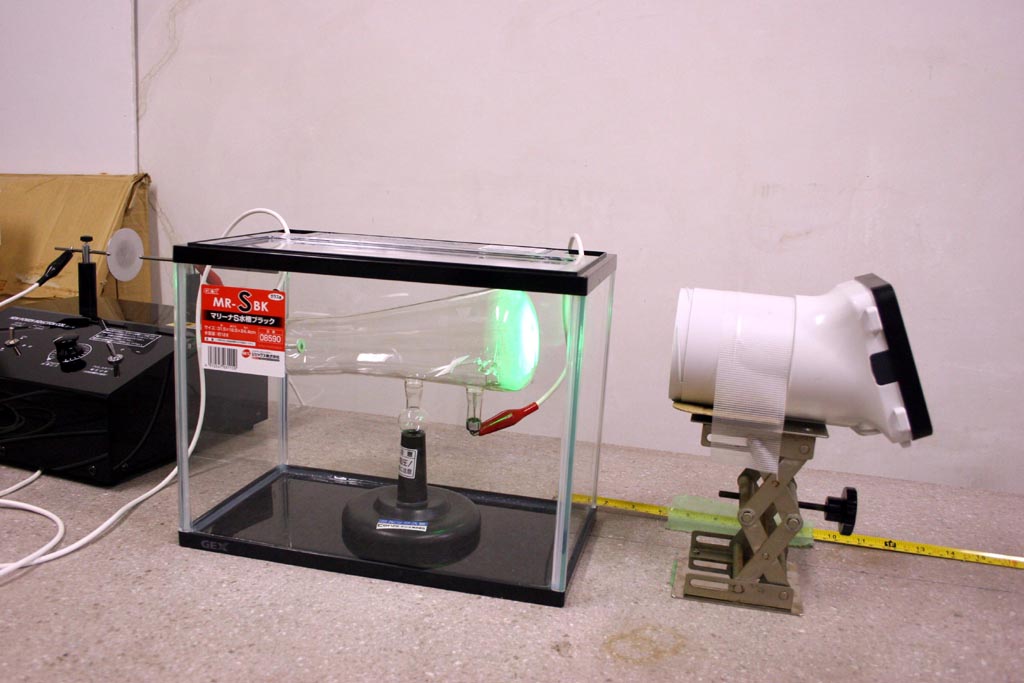No.245 教育用のX線装置を設置する場合
放射線の学習に用いるために、医療用のポータブルX線装置を多目的実習室に設置したいと考えています。多目的実習室を放射線管理区域とする必要はありますか?
放射線装置室
エックス線装置を設置するときは専用の室(放射線装置室)を設けなければならないとされています(電離則第15条)。
例外規定
エックス線装置を随時移動させて使用しなければならない場合や自己遮蔽がなされている装置などは、この限りではないとされています(電離則第15条)。
放射線装置室以外でエックス線装置を使用する場合
エックス線管の焦点又は放射線源及び被写体から5m以内の場所に労働者を立ち入らせてはならないとされています(電離則第18条)。ただし、外部放射線による実効線量が1週間に付き1mSv以下の場所を除くとされています。
管理区域の設定
3月間に1.3mSvを超えるおそれのある区域は管理区域とする必要があります(電離則第3条)。
線量を評価する場所
利用線錐方向も評価が必要ですか?
評価が不要とする規定は見当たりません。H(10)が20 μSv/hを超えないように遮蔽された構造の放射線装置を使用する場合には、放射線装置室を設置する必要はないとされています。
管理区域への立入制限
事業者は必要のあるもの以外を管理区域に立ち入らせてはならないとされています(電離則第3条)。
何が問題?
- 放射線装置室の多目的利用を容認するかどうか?
- 関係者間で検討されたガイドラインが存在していない(?)
- 学生に対する放射線防護のあり方
教育施設でのエックス線装置使用のガイドライン例
をご存じの方は教えて下さい。
山口大学
解剖学との連携
坂口修一.手術手技の教育・研究用エックス線透視装置の設置と運用
実践例
X 線透視による脊椎外科医の職業被曝の実際 未固定遺体より学ぶ
X線装置の防護基準
エックス線装置構造規格に従ったものとする必要があります。
医療用エックス線装置であれば、その規格を満足していると考えられます。
関連記事
労働安全衛生法
教育現場以外での放射線事故例
教育現場での放射線事故例
軟X線発生装置による被ばく事故
富樫 厚彦<岩手高校生被曝事故に関する考察>軟X線発生装置を利用した高校生物理授業における手指被曝事故の考察 : 2.計算による被曝線量推定
鈴木 昇一, 小林 正尚, 越田 吉郎.<岩手高校生被曝事故に関する考察>軟X線発生装置を利用した高校生物理授業における手指被曝事故の考察 : 3.岩手の超軟X線装置による被ばく事故と同様な装置による線量測定
西谷 源展, 大釜 昇, 笠井 俊文, 遠山 景子, 山田 勝彦.<岩手高校生被曝事故に関する考察>軟X線発生装置を利用した高校生物理授業における手指被曝事故の考察 : 4.理科実験用X線装置による線量測定
クルックス管を用いた物理実験は配慮することで安全に中学校や高等学校で実施することができます。お近くの専門家にお尋ねください。
クルックス管周辺のH'(0.07)

データの出典
谷口 和史ら.クルックス管プロジェクトシリーズ発表(3) 教育現場での実態測定結果報告.日本放射線安全管理学会 第17回学術大会( 2018/12/5 名古屋大学)
Rのコード
防護のアイデア例

距離を取らせ、制動放射を低減しています。
秋吉優史.学校教育現場におけるクルッス管の安全管理とその活用



